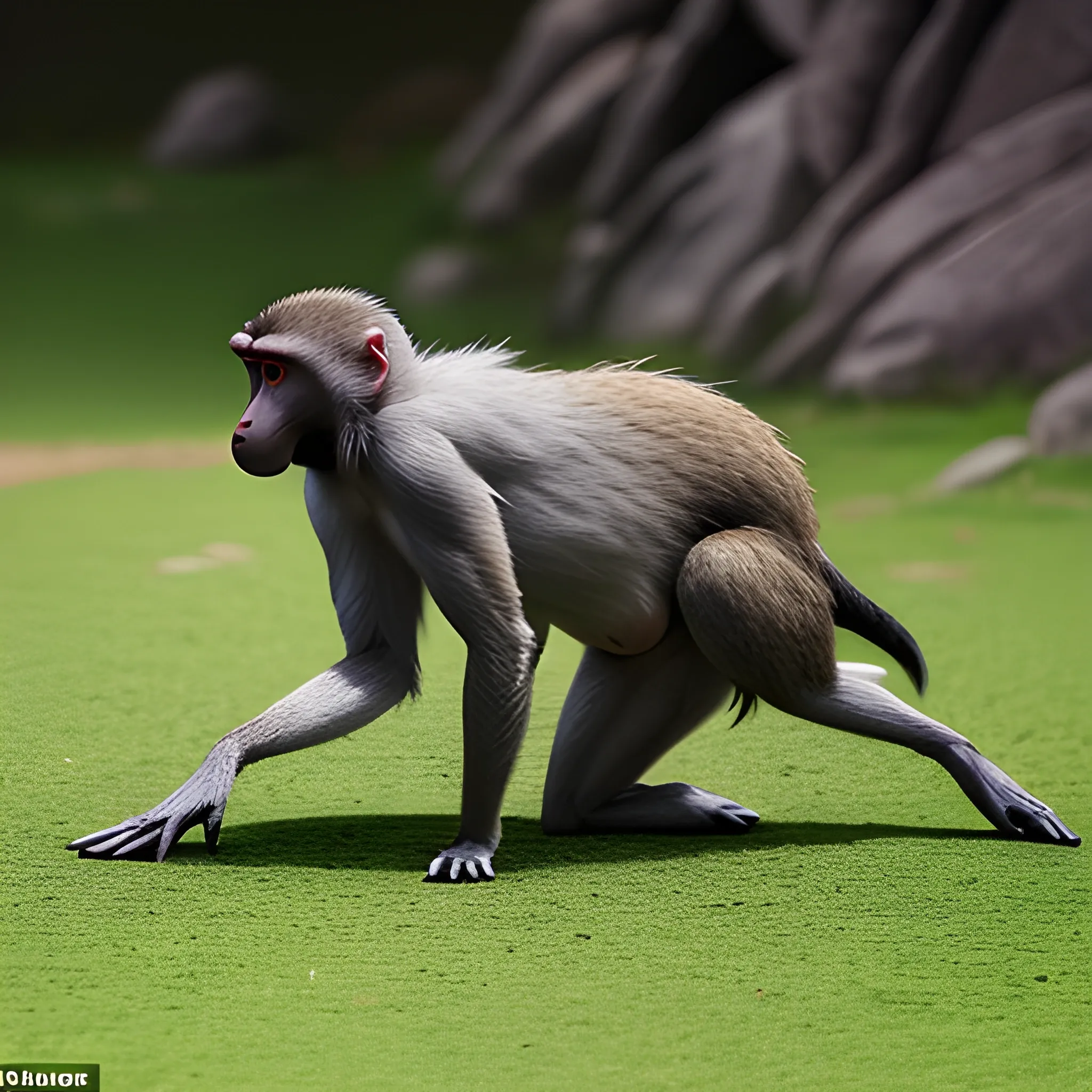Appearance: The Baboon is a medium-sized primate with a distinct...
Appearance: The Baboon is a medium-sized primate with a distinctive and charismatic appearance. It has a robust and muscular body, covered in short fur that can range in color from brown to gray or even olive-green. Baboons have a dog-like snout, sharp teeth, and a hairless face with prominent cheek pouches, which they use to store food. They have long arms and powerful legs, allowing them to move quickly and with agility. Features: Baboons are highly social creatures, living in close-knit troops that can consist of a few individuals to larger groups. Their intelligence and adaptability enable them to survive in various environments, from lush jungles to arid savannahs. They are known for their strong social hierarchy and complex communication, using vocalizations, gestures, and facial expressions to convey emotions and intentions. Habitat: Baboons are versatile animals that can thrive in a range of habitats, including forests, grasslands, and mountainous regions. They are often found near water sources, as they require regular access to drinking water. In your DND world, baboons might inhabit areas with lush vegetation or live in proximity to humanoid settlements, scavenging for food scraps. Behavior: Baboons are opportunistic omnivores, with a varied diet that includes fruits, leaves, seeds, insects, and small animals. They are skilled climbers and can use their agility to escape predators or reach high-up food sources. Baboons are known for their playfulness, engaging in social interactions, grooming, and even games with each other. Role in the World: In your DND world, baboons could serve as a part of the natural ecosystem or be associated with certain deities or nature spirits. Druids and rangers might have a special connection with baboons, viewing them as symbols of adaptability and community. Encountering baboons in the wild could present various opportunities for adventurers. They might have non-combat interactions with the primates, such as observing their social behaviors or using animal handling skills to communicate with them. Baboons could also play a role in quests involving local tribes or settlements, where their presence might be considered either beneficial or problematic depending on the circumstances. While not inherently aggressive, baboons can defend themselves and their troop if they feel threatened, making it essential for adventurers to approach them with respect and caution.
{ "seed": "1227513470", "steps": 30, "width": 512, "height": 512, "version": "SH_Deliberate", "sampler_name": "k_dpm_2", "guidance_scale": 7.5 }
